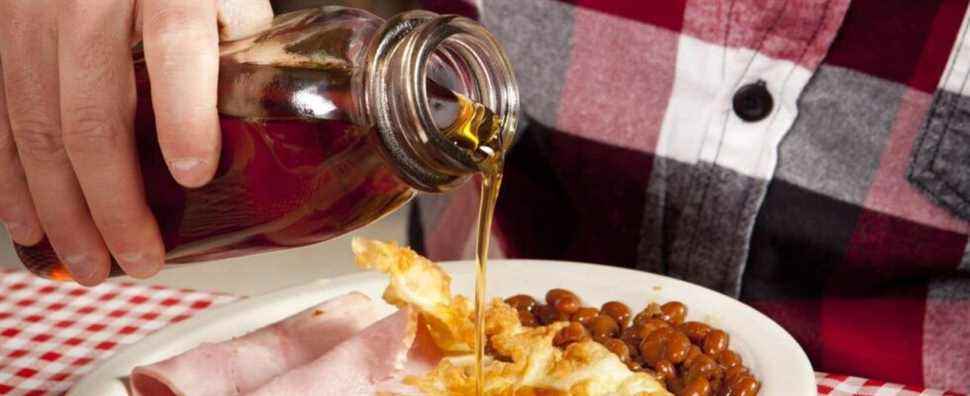This text is part of the special book Plaisirs
The first family sugar shacks opened their doors at the beginning of the 20th century.and century in Quebec. Initially, the guests brought their food, and the cook prepared it for them, drizzling everything with a generous drizzle of maple syrup. Sugaring off has always been an opportunity to gather around long tables, to celebrate spring — to escape Lent at a certain time — and to taste dishes intimately linked to this precise moment, a precious moment that we wait impatiently. Overview of the roots of the few flagship dishes of the sugar shack.
The pea soup
The origin of pea soup dates back to Xand century, long before the arrival of the sugar shack tradition. “Pea soup was the staple dish of the peasants of Europe, says culinary historian Michel Lambert on his site. quebeccuisine.ca. It was already prepared with a piece of salted bacon, on fat days of the week, and a piece of whale fat called craspois, Wednesdays, Fridays and Saturdays, lean days imposed by the Catholic Church. French settlers were quick to sow peas when they settled in Quebec, even though the First Nations were already growing beans. Like any good soup, the unifying ritual that accompanies it naturally finds its place on the menu of sugar shacks.
The “bines” with maple syrup
The recipe for baked beans has several origins and interpretations. Although varieties of beans were already growing on the continent, long before the arrival of settlers, indigenous communities from north to south cooked them in different ways. The Abenaki, for example, cook them gently in maple sap in the spring. In the Middle Ages, in France, they were cooked like pea soup with a piece of salted bacon, on fat days, and a piece of whale or beluga fat, on lean days. And in the era of colonization, dried beans were easily transported and stored over long journeys. From there, the transfer of many bean recipes. Added to this are the beans with molasses, better known in the lumber camps of New England. The idea of adding maple syrup to the recipe is therefore not surprising and it is very tempting!
Crispy ears
These slices of fried bacon recall the chicharron, well known in Spanish and Latin American cuisines. The famous trio of fat-salt-sugar, provided by the addition of maple syrup, makes it an unbeatable dish on sugar shack menus. In terms of its name, the term “ears” comes from the shape that the pieces of bacon take when fried. As for the swear word attached to its name, the Office québécois de la langue française specifies that “the addition of a religious element, before or after the name of the object, serves as in any swear word to intensify the expression. Often, especially in restaurant menus, the attenuated form ears of crisse is used [au lieu d’oreilles de Christ] “.
The smoked ham
The Aboriginals already knew the gastronomic virtues of maple sap and used it to cook game. Still according to Michel Lambert, the fashion for Easter ham in the Nordic countries would however come from the fact that the religious calendar places Easter at the same time as the thaw of nature – and therefore, the sugar season – and the need to smoke meats frozen so as not to lose them. “The ham that had just been smoked provided the meat needed to celebrate the Christian Passover,” he wrote. This tradition is firmly anchored in Quebec with the addition to the ham of the major presence of maple with its sawdust for smoking and its sap to make sugar and syrup. This sugar also came to balance the very salty and very smoky taste of the traditional ham. »
Grandfathers in syrup
Of Acadian origin, grandfathers in maple syrup quickly found their place among the star desserts on the menu of sugar shacks. Their origin would also go back to the lumber camps. These fluffy balls of dough, called grandpa’s dumplings in English, cooked in maple syrup would be named after grandfathers for two possible reasons. According to popular legend, it would be either because they are soft enough to be eaten without worry even if you don’t have all your teeth, or because it was the grandfathers who cooked them. One thing is certain, it is one of the most popular desserts on the sugar shack menu!
